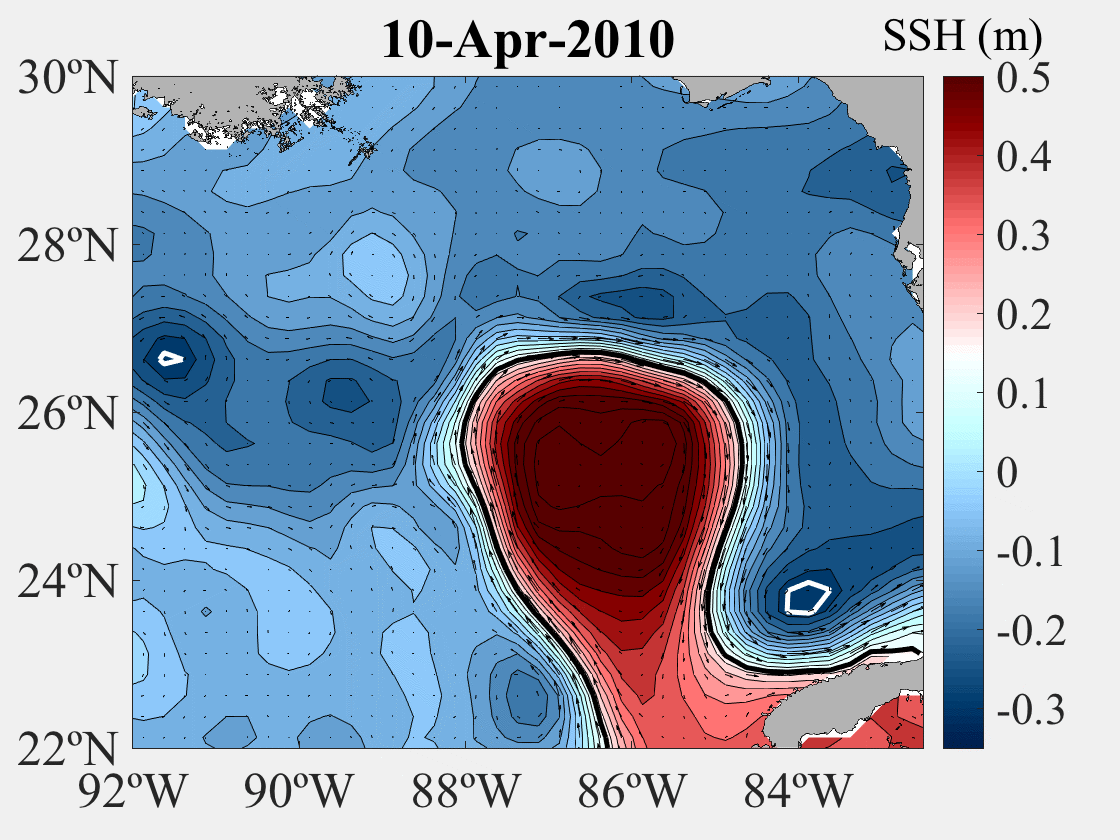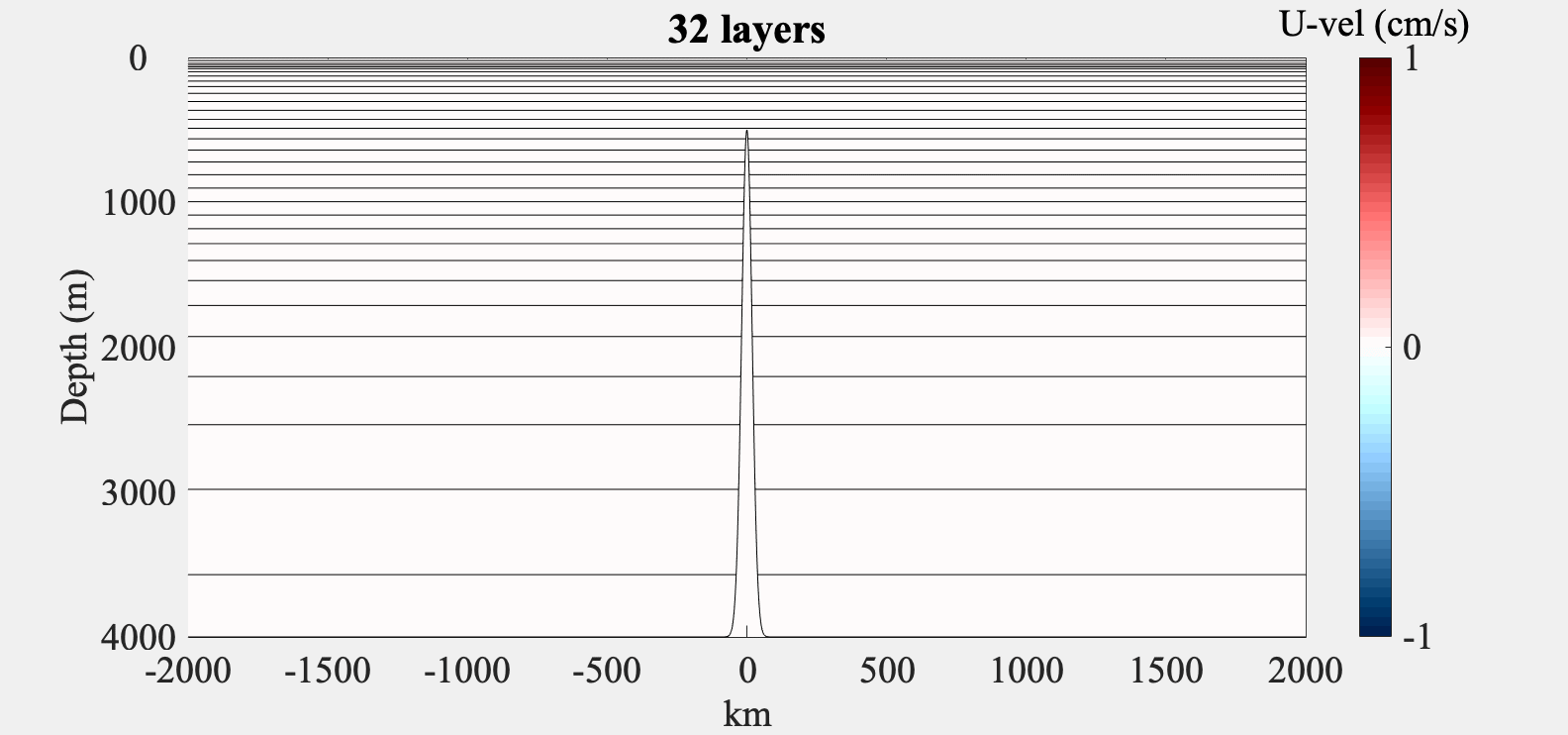Mesoscale dynamics and front-eddy interactions
Application to the Gulf of Mexico Loop Current System
The Loop Current (LC) is the only permanent current and the most energetic feature in the Gulf of Mexico. Once the LC reaches an advanced and unstable stage, a warm eddy sheds from the main current and moves southwestward. The shedding of the LC is very irregular, and its prediction is still very inaccurate. Nonetheless, it is known that cold-core, frontal eddies play an important role in the shedding as they can amplify and constrict the LC.
Read more »
 Sea surface height field (SSH) for the Loop Current (LC) system, generated using E.U. Copernicus Marine Service Information. The LC is shown by the 17 cm SSH black contour and the strong frontal eddies by the -28 cm SSH white contour.
Sea surface height field (SSH) for the Loop Current (LC) system, generated using E.U. Copernicus Marine Service Information. The LC is shown by the 17 cm SSH black contour and the strong frontal eddies by the -28 cm SSH white contour.
Internal Tides
Another topic I work on is modeling internal tides. I investigated the influence of vertical resolution on internal tide energetics and its effects on underwater acoustics propagation using HYCOM. Using HYCOM in an idealized configuration with a ridge and only forced by semidiurnal tides, I found that increasing the vertical resolution impacts vertical shear and tidal energetics (baroclinic kinetic energy and available potential), which in turn impact sound speed variability and underwater acoustic propagation (Hiron et al., 2024). Ongoing research includes investigating the interaction between internal tides and mesoscale eddies.
Read more »
 Internal tide-induced baroclinic velocity generated using the HYbrid Coordinate Ocean Model (HYCOM) in an idealized configuration with a ridge and forced solely by semidiurnal tides. Black lines are the isopycnal interface depths.
Internal tide-induced baroclinic velocity generated using the HYbrid Coordinate Ocean Model (HYCOM) in an idealized configuration with a ridge and forced solely by semidiurnal tides. Black lines are the isopycnal interface depths.
 Sea surface height field (SSH) for the Loop Current (LC) system, generated using E.U. Copernicus Marine Service Information. The LC is shown by the 17 cm SSH black contour and the strong frontal eddies by the -28 cm SSH white contour.
Sea surface height field (SSH) for the Loop Current (LC) system, generated using E.U. Copernicus Marine Service Information. The LC is shown by the 17 cm SSH black contour and the strong frontal eddies by the -28 cm SSH white contour.
